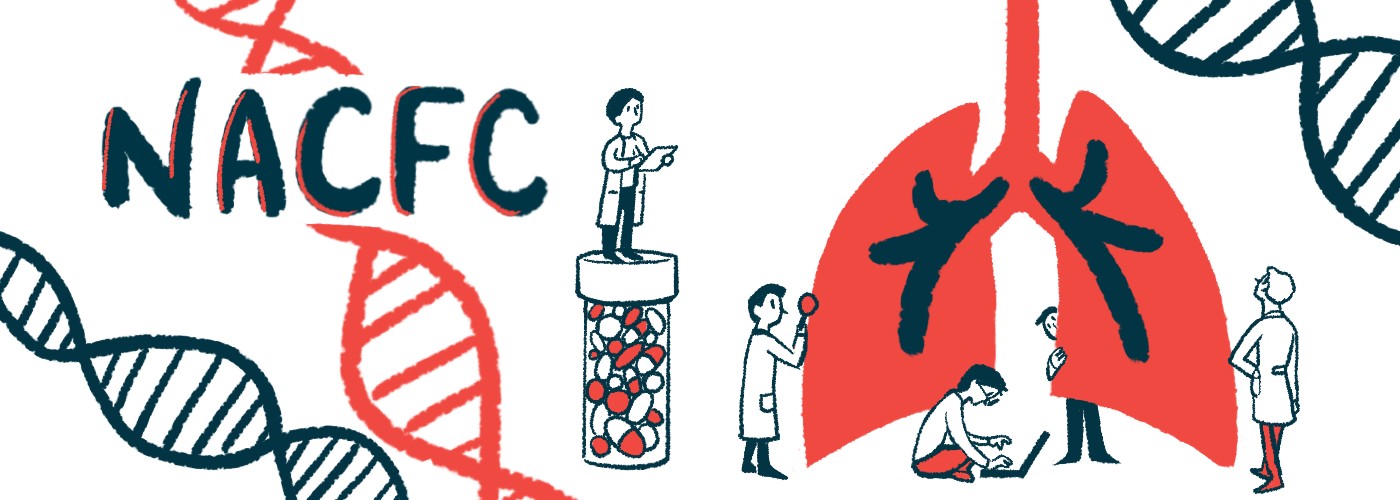#NACFC2022 – Lung Health Gains Seen in Children Using Trikafta
PROMISE study 6-month update also finds sweat chloride, life quality benefits

Six months of treatment with Trikafta (elexacaftor/tezacaftor/ivacaftor) led to significant improvements in lung function and a self-reported easing of respiratory symptoms for children with cystic fibrosis (CF) ages 6 to 11 in an observational study of its real-world use.
Felix Ratjen, MD, PhD, division chief of pediatric respiratory medicine at The Hospital for Sick Children in Ontario, presented these findings at the 2022 North American Cystic Fibrosis Conference (NACFC) in Philadelphia. The presentation was titled “Effectiveness of Elexacaftor/Tezacaftor/Ivacaftor in children with cystic fibrosis: The Pediatric PROMISE study,” and the work was funded by the CF Foundation.
Trikafta is a combination of three CFTR modulators — medications that can improve the workings of the CFTR protein, defects in which cause CF, in people with specific disease-causing mutations. The therapy is sold by Vertex Pharmaceuticals, and it is approved in the U.S. to treat patients with eligible mutations ages 6 and older.
Gains seen in lung clearance, forced expiratory volume with Trikafta
The PROMISE Pediatric Study (NCT04613128) is an ongoing, observational trial assessing outcomes for children with CF, ages 6 to 11, who are being treated with Trikafta in clinical settings. A similar study, PROMISE (NCT04038047), is following outcomes for patients ages 12 and up.
At NACFC, Ratjen shared data covering 125 children who had been treated with Trikafta for six months. Most (56.8%) were male, and their mean age at starting Trikafta was 9.1 years. All but one of these children carried at least one copy of F508del, the most common CF-causing mutation.
All underwent assessments before and after starting on Trikafta therapy. Two tests were used to measure lung function: the lung clearance index (LCI), which measures how long it takes for gas to be cleared from the lungs, and percent predicted forced expiratory volume in one second (FEV1pp), which assesses how much air a person can forcibly exhale in a second.
Average scores on both measures improved significantly after six months of Trikafta’s use. The group’s mean LCI decreased from 7.25 to 6.51 turnovers, indicating that the lungs could more quickly move gas in and out. Mean FEV1pp increased from 100.0% to 106.4%.
Problems with the CFTR protein result in elevated levels of chloride in a person’s sweat. Sweat tests showed that mean chloride levels decreased significantly, by 47.2 millimole per liter, after six months of Trikafta.
Scores on the respiratory domain of the Cystic Fibrosis Questionnaire Revised (CFQ-R), a measure of health-related life quality, also improved significantly after six months of Trikafta’s use, by 4.1 points on average.
“In this ongoing, prospective, observational post-approval study of [Trikafta] in children, significant improvements in LCI, FEV1pp, sweat chloride, and self-reported respiratory symptoms were observed six months after drug initiation,” Ratjen said.
Ratjen noted that the magnitude of improvements reported here is somewhat modest compared to those seen in Phase 3 clinical trials. But this difference is probably explained by the fact that the children in this study started off with generally better lung function than those in the trials, he said.
He further noted that future reports will explore additional measures of benefit for up to four years of treatment.
Note: The Cystic Fibrosis News Today team is providing in-depth coverage of the 2022 North American Cystic Fibrosis Conference (NACFC) Nov. 3-5. Go here to see the latest stories from the conference.








